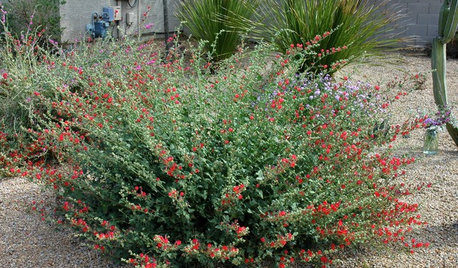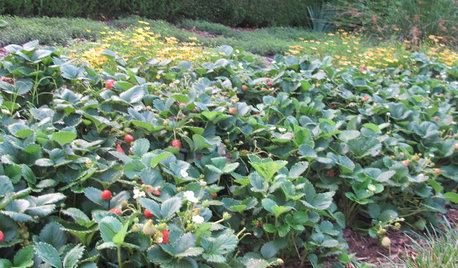Watering, fertilizing and roots
lubadub
9 years ago
Related Stories

GARDENING GUIDESGet on a Composting Kick (Hello, Free Fertilizer!)
Quit shelling out for pricey substitutes that aren’t even as good. Here’s how to give your soil the best while lightening your trash load
Full Story
ARTThe Beauty of Bonsai — Living Art, Rooted in Harmony
Create your own emblem of nature's balance with an art form dating back 1,000 years
Full Story
CENTRAL PLAINS GARDENINGGreat Design Plant: Culver's Root
Spiky summer blooms beloved by butterflies and architectural interest in winter make this Midwest native plant worth featuring in the garden
Full Story
GARDENING GUIDESRocky Mountain Gardener: What to Do in July
Keep the party going all summer long with smart watering methods and fertilizer. Get ready for next year and order bulbs now
Full Story0

GARDENING GUIDESCommon Myths That May Be Hurting Your Garden
Discover the truth about fertilizer, soil, staking and more to keep your plants healthy and happy
Full Story
GARDENING GUIDESHow to Keep Your Citrus Trees Well Fed and Healthy
Ripe for some citrus fertilizer know-how? This mini guide will help your lemon, orange and grapefruit trees flourish
Full Story
GARDENING GUIDESHow to Switch to an Organic Landscape Plan
Ditch the chemicals for a naturally beautiful lawn and garden, using living fertilizers and other nontoxic treatments
Full Story
GARDENING GUIDESSouthwest Gardener's February Checklist
Orange you glad for a citrus-fertilizing reminder? And don't forget the recommended doses of vegetable seeds and cold-hardy flowers
Full Story
REGIONAL GARDEN GUIDESSoutheast Gardener's September Checklist
Fertilize strawberries, plant a tree or two and beckon hummingbirds to your Southern garden this month
Full Story
GARDENING GUIDESPacific Northwest Gardener: What to Do in September
Put in cool-weather veggies, fertilize your lawn and tidy the garden this month before chilly weather arrives
Full Story





Embothrium
lubadubOriginal Author
Related Professionals
Marina Landscape Architects & Landscape Designers · Waterbury Landscape Contractors · Bainbridge Island Landscape Contractors · Lancaster Landscape Contractors · Ashburn General Contractors · Beloit General Contractors · Jackson General Contractors · Marietta General Contractors · Medway General Contractors · Newington General Contractors · Pocatello General Contractors · Warrenville General Contractors · Dedham Decks, Patios & Outdoor Enclosures · Provo Decks, Patios & Outdoor Enclosures · Towson Decks, Patios & Outdoor Enclosurescold_weather_is_evil
carolyn137
lubadubOriginal Author
Pyewacket
lubadubOriginal Author
carolyn137
lubadubOriginal Author
carolyn137
PupillaCharites
seysonn
lubadubOriginal Author
chewy2u